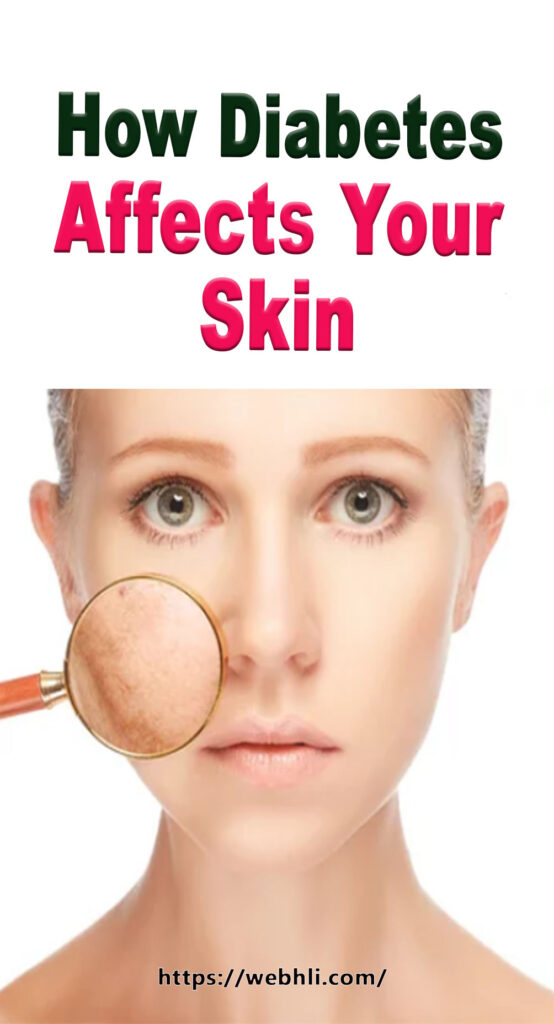
Type 2 diabetes is a whole body problem. In other words, it doesn't just affect one small portion of your body. Instead, it can have complications throughout many of your different organ systems, including your skin. The skin is the largest organ in your body, so it only makes sense that Type 2 diabetes would also show up there.
Studies show that up to 33 percent of people who have diabetes will be affected by a skin disorder at some point during their lives. The good thing is that many of these skin conditions can be prevented or treated easily as long as they are caught in the early stages.
How Lemon and Lemon Water Can Help Reverse Diabetes
Urinary Tract Infection Home Cure
Control Your Diabetes Better With These Helpful Tips
Gastroparesis - A Challenge to Control
Blood Sugar Control and Diet - A Plan to Reverse Diabetes
Diabetes Natural Home Remedies – Worth a Try?
Can Magnesium Prevent Diabetes?
Zinc Shown to Promote Insulin Production In Diabetics
Problems with the skin are among the least serious complications of diabetes, but they can be troublesome and distressing because the skin figures so prominently in people's self-image and self-esteem.
Although anyone can get a skin disease or disorder, people with Type 2 diabetes are much more prone to it. This is because they are susceptible to fungal and bacterial infections. In addition, itching can cause a whole host of issues with the diabetic as it can allow more bacteria into the body. There are certain skin conditions that only happen to diabetics including:
- necrobiosis lipoidica diabeticorum or NLD. NLD appears as a pink or red discoloration of the skin, which tightens and becomes shiny, similar to the skin of an apple.
- diabetic blisters,
- diabetic dermopathy, and
- eruptive xanthomatosis. These are orange fatty plaques that can appear around your eyes or on your elbows, shins, or ankles. They are often related to fat levels in your body, especially the levels of cholesterol of triglycerides.
Some of the more common skin conditions that could come up for diabetics are:
- boils,
- folliculitis,
- nail infections,
- styes, and
- carbuncles.
Of course, people without diabetes can also get these conditions so having them doesn't necessarily mean that you are a diabetic. These inflamed tissues normally feel hot, red, painful and swollen. Most of the time, they are caused by organisms which turn into infections. The most common organism Staphylococcus bacteria, also known as a staph infection. Your doctor may wish to take a culture and prescribe a medication to help clear them up.
Thankfully, antibiotics can control all of these skin issues. Of course, it's important for the diabetic to get diagnosed early so the infection does not spread. Diabetics are especially susceptible to virulent bacteria, so it's important to let your doctor know if you show any signs of these skin conditions.
Diabetics often have to deal with fungal infections as well. Many of these come from candida albicans. These yeast infections often create rashes in moist, warm areas. Sometimes, they will cause scales and blisters also. These kinds of infections are most likely to happen in areas such as:
- between the fingers and toes,
- under the breasts,
- around the fingernails or toenails, and
- in the corners of the mouth.
They can also happen in the armpits or groin area.
Examples of these would be athletes foot, vaginal infection and ringworm. Again, it's especially important for diabetics to let the doctor know if they are experiencing any of these types of skin conditions.
WHAT CAN YOU EAT IF YOU HAVE DIABETES
Good Energy Food for Diabetics
10 Simple Food Concepts Every Person Living With Diabetes Should Know
Making Cheesecake For Diabetics
Enjoy the Taste and Benefits of Diabetic Foods
Will The Mulberry Leaf Help Your Diabetes?
Since many skin problems are intensified or triggered by stress, using stress-reduction techniques such as exercise, meditation, counseling or support groups, may help with control.
To discover answers to questions you may be asking yourself about Type 2 Diabetes, click on this link... Natural Diabetes Treatments
Clicking on this link will help you to learn more about Type 2 Diabetes Solutions... Beverleigh Piepers RN... the Diabetes Detective.
Article Source: http://EzineArticles.com/6584890

 Protected by Patchstack
Protected by Patchstack